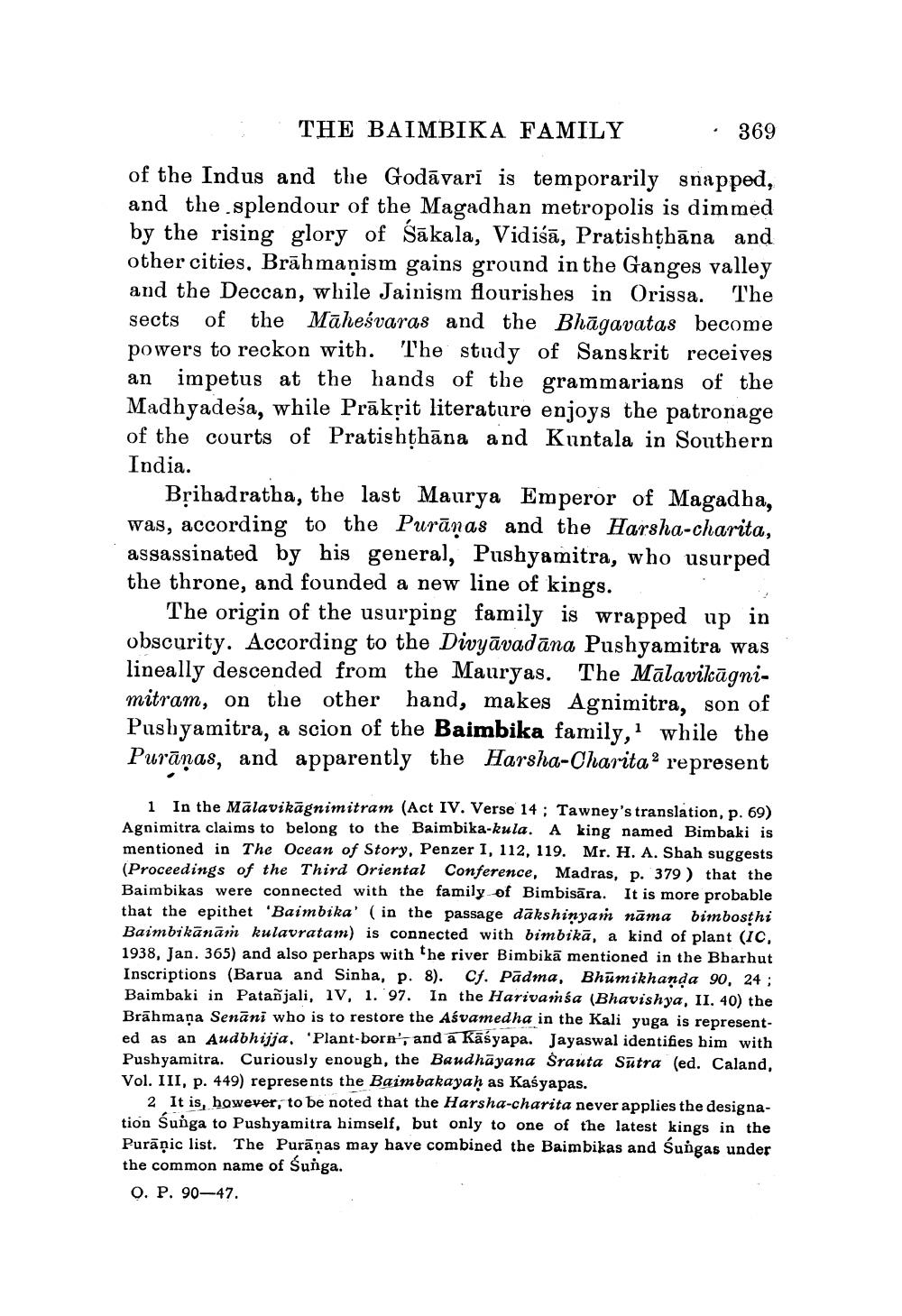________________
THE BAIMBIKA FAMILY
369
of the Indus and the Godāvari is temporarily snapped, and the splendour of the Magadhan metropolis is dimmed by the rising glory of Śākala, Vidiśā, Pratishthāna and other cities. Brāhmaṇism gains ground in the Ganges valley and the Deccan, while Jainism flourishes in Orissa. The sects of the Māheśvaras and the Bhāgavatas become powers to reckon with. The study of Sanskrit receives an impetus at the hands of the grammarians of the Madhyadeśa, while Prākṣit literature enjoys the patronage of the courts of Pratishthāna and Kuntala in Southern India.
Brihadratha, the last Maurya Emperor of Magadha, was, according to the Purāṇas and the Harsha-charita, assassinated by his general, Pushyamitra, who usurped the throne, and founded a new line of kings.
The origin of the usurping family is wrapped up in obscurity. According to the Divyāvadāna Pushyamitra was lineally descended from the Mauryas. The Mālavikāgnimitram, on the other hand, makes Agnimitra, son of Pushyamitra, a scion of the Baimbika family, while the Purānas, and apparently the Harsha-Charita” represent
1 In the Mālavikāgnimitram (Act IV. Verse 14 ; Tawney's translation, p. 69) Agnimitra claims to belong to the Baimbika-kula. A king named Bimbaki is mentioned in The Ocean of Story, Penzer I, 112, 119. Mr. H. A. Shah suggests (Proceedings of the Third Oriental Conference, Madras, p. 379 ) that the Baimbikas were connected with the family of Bimbisāra. It is more probable that the epithet 'Baimbika' (in the passage dakshinyam nāma bimbosthi Baimbikānām kulavratam) is connected with bimbikā, a kind of plant (IC, 1938, Jan. 365) and also perhaps with the river Bimbikā mentioned in the Bharhut Inscriptions (Barua and Sinha, p. 8). Cf. Padma, Bhumikhanda 90, 24; Baimbaki in Patañjali, iv, 1. 97. In the Harivamsa (Bhavishya, II. 40) the Brāhmaṇa Senāni who is to restore the Aśvamedha in the Kali yuga is represented as an Audbhijja. 'Plant-born', and a Käsyapa. Jayaswal identifies him with Pushyamitra. Curiously enough, the Baudhāyana Srauta Sutra (ed. Caland, Vol. III, p. 449) represents the Baimbakayaḥ as Kaśyapas.
2 It is, however, to be noted that the Harsha-charita never applies the designation Sunga to Pushyamitra himself, but only to one of the latest kings in the Purāņic list. The Purānas may have combined the Baimbikas and Sungas under the common name of þunga. 0. P. 90—47.




